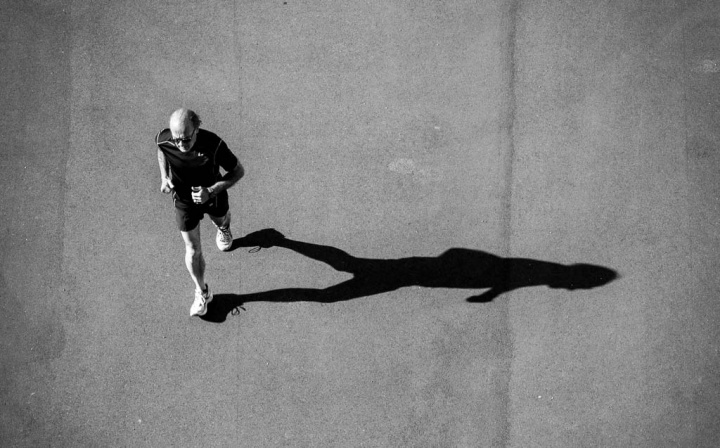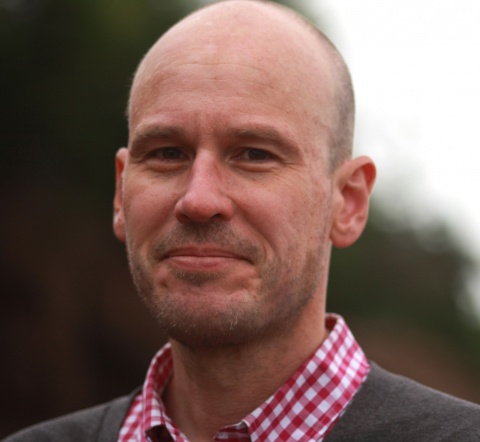Columbia College | Columbia University in the City of New York
“A Running Start,” by Ben Ratliff ’90
For the last five years I have run outdoors every morning in New York City, mostly in the Northwest Bronx. The only days I miss are when I am sick; under pressure of having to write, teach or travel; or so greatly content or uninspired that running won’t make a difference. Those days are few — maybe 20 in the past year.
I was 43 when I started. The first week I had problems of will; the second week my back hurt; the third week I went crazy noticing my own breathing. During the fourth week, when it started to feel like a habit, I wondered how that could be, since I had never liked running. And so I asked myself: I’m running from something. What is it?
It’s always from, never to. I don’t feel any more haunted or irresponsible than the average person; I do feel a constant need to distance myself from some old assumption or reflex. (In middle age, there are hundreds of these, and they need attention before it’s too late.) Running at least gives me the freedom and optimism to think such distancing may be possible. At most it gives me a lot more, so that the necessity of running from may lead to the desire of running to.

FLICKR CREATIVE COMMONS/RALF PREUSS
“What am I running from?” is never a dumb question, and the answer keeps changing. At first it was astonishing to realize I was enacting a metaphor: That’s something I mostly see in fictional stories. Recently, by luck, I came upon two sharp and wise new nonfiction books: Vybarr Cregan-Reid’s Footnotes: How Running Makes Us Human and Catriona Menzies-Pike’s The Long Run: A Memoir of Loss And Life In Motion. I generally don’t read books about running, probably for the same reason I don’t time myself or track my distance or train for marathons: I worry that to quantify running would be to remove the joy of it. It turns out that these writers aren’t really interested in quantifying running either, or at least not principally. But they are interested in the metaphor. The extent to which they deal with the metaphor is pretty much the value of their books. And because they deal with the metaphor, they seem to know themselves.
Menzies-Pike, an Australian journalist and scholar who edits the Sydney Review of Books, writes about running as a daily practice that has slowly focused her life since the age of 20, when her parents died in a plane crash. But she also places herself within, as she puts it, a “genealogical connection to a running past” — specifically a female one, in which runners are often being chased, stopped or doubted. “To map the meaning of any kind of run, we need to pay attention to prepositions,” she writes. (You see what I mean?) And later: “As I ran more, I began to listen closely to the inflections that distinguish cautionary tales about women runners from heroic epics about the men who run after them.”
The Long Run looks like a book about getting over grief. It is sort of that, but also a book of feminist politics, literary and art criticism, and distance-running lore; it references Ovid, Jane Austen, Botticelli, the early English marathoner Violet Piercy and a jerky trainer at a gym in Sydney. The book is principled, curious and skeptical. Having run five marathons and several dozen half-marathons, Menzies-Pike says she finds it hard to call herself a runner. “What I really am is a reader,” she decides. This is hard to dispute.
Cregan-Reid, a literature and environmental-humanities professor at University of Kent in England, is also a reader, in more than one sense. He runs through the land of his literary interests: Hardy, Coleridge, Thoreau. But Footnotes is also full of “readings” of the runnings themselves: He gets out there, in South London or the Cotswolds or Concord, Mass. — often barefoot — and he virtuosically registers the path, letting it tell him its own history. (A report from a Sussex run: “On days like today, the Downs take on a strange timpanic resonance. As my feet strike the ground it sounds empty as a drum. People have farmed the land here for many thousands of years, before the geometric hedgerows, before the cricket pitches and tennis courts that now appear on the Weald below.”) He writes about the biomechanics of running, the differences between Paleolithic and Anthropocene bodies, and about proprioception, the way we perceive our limbs moving through space.
But he also writes about the metaphor. He remembers a run in 2011 in London’s Peckham Rye when a boy pointed toward him, asking his mother: “Mum? What’s that man running away from?”
“For the rest of the run, and for hours, even days, afterwards I think about that question,” Cregan-Reid reflects. “I manage to come up with some answers: I’m running from my asthma, emails, responsibilities, middle age, my chair, my desk, my chores — I’m pleased with the benign nature of these causes; I don’t mind being their quarry because I think I understand them.” Then he briefly describes his father: prone to strokes and heart attacks starting in his 50s, speechless for the last 10 years of his life, dead at 62. “I’m on the run from my genetic inheritance, too, I think,” he says. I think so, too.
I have never written about running before now. These books suggest a way of writing about running, and running about writing, that I didn’t know existed. I may do more of it.
I'm running toward something. What is it?

KATE FOX REYNOLDS

